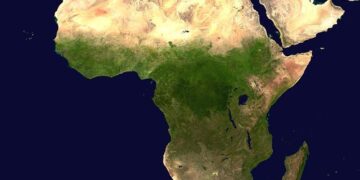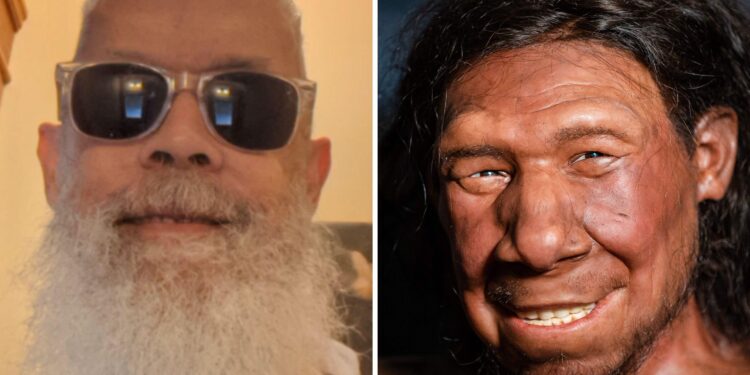In a groundbreaking scientific achievement, researchers have successfully sequenced the DNA of what is believed to be the “last Neanderthal,” providing unprecedented insights into human evolution and rewriting long-held narratives about our ancient relatives. This remarkable discovery, detailed in a recent study, sheds new light on the interactions between Neanderthals and early modern humans, challenging existing timelines and offering a deeper understanding of our complex genetic heritage. The findings mark a significant milestone in paleoanthropology, with implications that resonate far beyond the laboratory.
Scientists Uncover Genetic Secrets of the Last Neanderthal Changing Evolutionary Timeline
In a groundbreaking breakthrough, geneticists have successfully sequenced the full genome of the last known Neanderthal, revealing unprecedented insights into their biology and relationship with modern humans. This ancient DNA sample, extracted from a remarkably preserved fossil, challenges previous assumptions about the timeline and interactions between Neanderthals and Homo sapiens. Scientists found that interbreeding events were far more complex and occurred over a longer period than formerly believed, suggesting a dynamic prehistoric ecosystem where genes flowed across species boundaries.
Key findings from the sequencing include:
- Neanderthal genetic diversity was greater and lasted longer than previously documented.
- Evidence of multiple interbreeding waves with early modern humans.
- Identification of unique genetic markers that shed light on Neanderthal immunity and adaptation.
- Revised estimates pushing back the extinction timeline by thousands of years.
| Aspect | Previous Understanding | New Insights |
|---|---|---|
| Neanderthal Extinction | ~40,000 years ago | ~35,000 years ago |
| Interbreeding Period | Short, isolated events | Multiple extended waves |
| Genetic Diversity | Limited | Surprisingly rich |
New Insights Reveal Complex Interactions Between Neanderthals and Early Humans
Recent advancements in genetic sequencing have unlocked unprecedented details about Neanderthal life, thanks to the analysis of DNA from one of the last known Neanderthals. This groundbreaking research challenges previous assumptions by revealing a far more intricate web of interactions between Neanderthals and anatomically modern humans. Evidence now points to repeated episodes of interbreeding, cultural exchange, and shared technologies, suggesting that the two groups coexisted in a dynamic and interconnected environment rather than existing in isolated or purely antagonistic terms.
Key findings illustrate how these interactions likely influenced human evolution in subtle but significant ways. For example, genetic contributions from Neanderthals appear to have enhanced early humans’ immune systems and adapted them to Eurasian climates. The following table summarizes some critical insights:
| Aspect | Neanderthal Contribution | Impact on Early Humans |
|---|---|---|
| Genetics | Inherited 1-2% DNA | Boosted immune defense |
| Culture | Shared tool-making techniques | Improved survival strategies |
| Environment | Adaptation to cold climates | Expanded geographic range |
These revelations compel a reevaluation of the simplistic narratives painting Neanderthals as primitive rivals, instead highlighting their complex role in shaping the human story.
Experts Recommend Expanding DNA Research to Rewrite Human Ancestry Narratives
Recent breakthroughs in sequencing the genome of one of the last known Neanderthals have challenged long-standing assumptions about human evolution. This cutting-edge research reveals not only unexpected genetic overlaps between Neanderthals and modern humans but also hints at previously unknown migratory and interbreeding events. Scientists emphasize the urgent need to broaden DNA research across extinct hominin species to fully understand the complexities of human ancestry and the intertwined evolutionary paths that shaped our species.
Experts argue that expanding the scope of genetic studies could lead to:
- Discovering hidden chapters in our evolutionary history
- Refining timelines for divergence and hybridization events
- Uncovering environmental adaptations encoded in ancestral DNA
- Informing modern medicine through a better grasp of genetic inheritance
| Key Genetic Findings | Implications |
|---|---|
| Unexpected Neanderthal-MH DNA overlap | Redefines interbreeding timeline |
| Regions linked to brain development | Possible cognitive trait influences |
| Adaptations to cold climates | Insight on survival strategies |
To Wrap It Up
The groundbreaking sequencing of the so-called “Last Neanderthal” DNA not only sheds new light on the final chapters of Neanderthal existence but also challenges long-held assumptions about human evolution and interspecies interaction. As researchers continue to unravel the complex tapestry of our ancient past, this discovery opens the door to a deeper understanding of how Neanderthals contributed to the genetic heritage of modern humans, fundamentally altering the narrative of human history.































